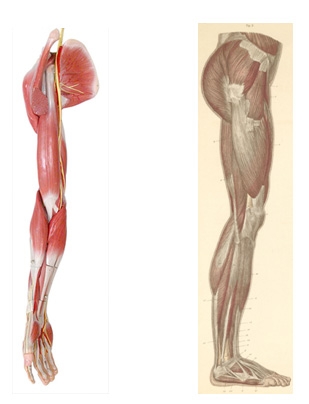
The Reconstruction of upper and lower limb differ from other areas in particular surgical aspects such as etiology, anatomy or technique and its social consequences.
Upper limbs are designed for providing to human beings the abilities to interact with the environment and change it. Large number of muscles and their tendons represent at a functional level the maximum complexity found within the musculoskeletal system.
Tumor pathology in upper extremity is not common compared to lower limb. Trauma and infections are the most frequent disorders found in this region.
Development of lower extremity and upright gait had a great impact on human evolution. Very powerful striated muscles specific to lower limbs, can withstand heavy loads and movements with low accuracy.
Frequent injuries in these parts of the body are difficult to protect due to riding motorcycles, practicing extreme sports such as skiing, bungee jumpin and, mountain-bike as well as traffic is raising. High-energy trauma is usually the cause of complicated fractures as well as severe destruction of soft tissues (skin and muscles).
In most open fractures, orthopaedic surgeons will need the help of plastic and reconstructive surgeons so as to provide soft tissue coverage, a crucial element for successful bones healing, to avoid amputation and the development of osteomyelitis or unstable scars.
Moreover, life expectancy of the population is increasing and is linked to a greater number of problems such as chronic trophic ulcers, secondary to degenerative and vascular diseases and the increased risk of soft tissue tumors and sarcomas.
All these conditions must be performed by an experienced plastic surgeon to achieve the best results in order to get an acceptable quality of life. Surgical techniques aiming to solve these problems had many significant limitations and often had important consequences a few years ago.
Today, microsurgery allows us to reconstruct lower extremities with a better functional and aesthetic outcomes. These techniques include tissue transfer from one part of the body to another, connecting vessels under microscope often smaller than 1 mm in diameter.
In open tibial fractures we may use one of the expendable muscles to provide fracture coverage such as latissimus dorsi or gracilis.
If we need only skin coverage we may use the latest microsurgery techniques. These techniques let us transferring tissues from one part of the body to another side with minimal sacrifice for the patient anatomy and function, providing successful outcomes and the best quality of life after surgery.



 This site complies with the HONcode standard for trustworthy health information:
This site complies with the HONcode standard for trustworthy health information: Parc Salut Mar
Passeig Marítim 25-29 Barcelona 08003
See location on Google maps
Phone: 93 248 30 00 · Fax: 93 248 32 54
Information request
© 2006 - 2024 Parc de Salut Mar · Legal notice and Privacy Police | Cookie Policy | Accessibility